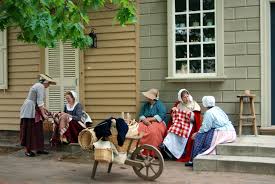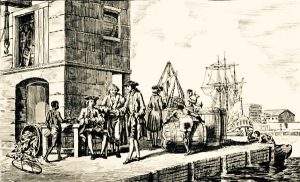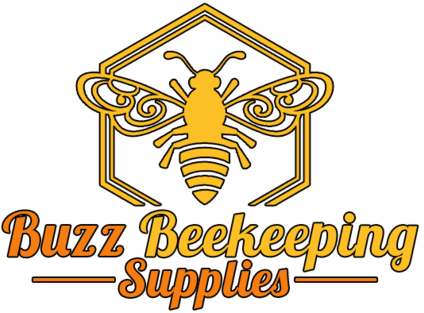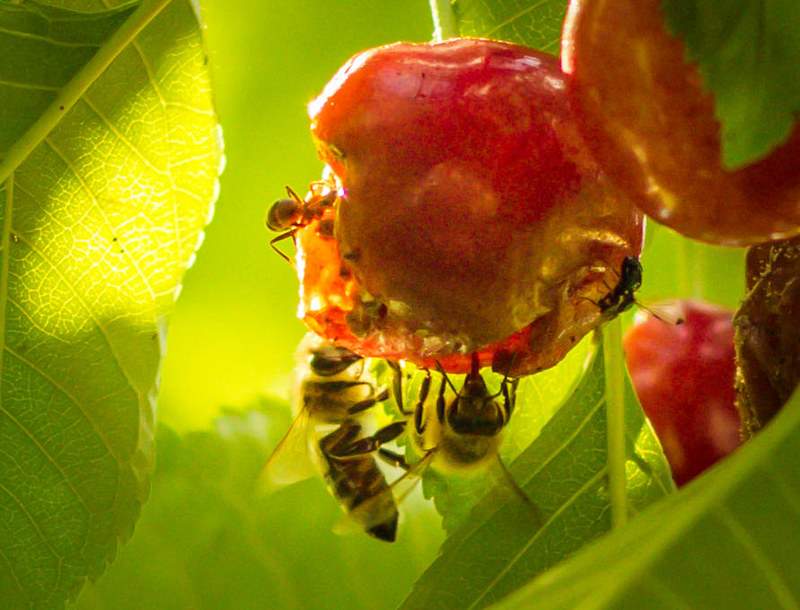Honeybees in Colonial America

Although honeybees are a common sight in America today, they haven’t always called the Western Hemisphere home. English settlers first introduced honeybees to the area in 1622 after realizing how important they were for crop pollination, as well as for providing much needed honey and beeswax.
On a side note, honeybees were referred to as the “White Man’s fly” by Native Americans, who were said to know white men were on their way when they saw them.
Introducing Honeybees to America
According to Richard Brewster, a well-established beekeeper, Black Russians, which were “miserable as the devil”, were originally imported. Considerably smaller than today’s honeybees, they are no longer found in the United States.
Plentiful in England, Black Russians were shipped in skeps, or woven baskets, on an 8-week long journey to their new country. Colonists transported them home by horse wagon.
Later, settlers would track their movements from their watering hole to their tree hive. The tree would be cut down and some of the trunk used as a hive with a removable top to make harvesting honey much easier.
Colonists preferred to use gum trees because their insides rot at a faster rate than any other tree, making plenty of room for the bees to inhabit. These hives were referred to as “bee gums.”
Later, bees would be housed in box hives, clay jars, straw skeps, or anything else nearby, even a coil of rope. In an effort to study them and learn more about them, some people would make honeybees build their nest in a glass vase. This, along with other similar experiences, gave us the opportunity to learn how a hive worked.
At times colonists would place sticks inside the skeps, allowing bees to build comb on them. They would also use wooden box hives with sticks placed inside to create a wax foundation. Unfortunately, it was impossible to remove honey or honeycomb from these containers, so harvesting would lead to the death of the entire bee colony. Additionally, beekeepers were unable to lift the frames and see inside, so it was impossible to know if the queen had died or if parasites had entered.
Colonists wa ited until the winter months when bees were sleepy to harvest their much needed honey. Using smoke as a distraction, they would cut the comb out and drain the honey from inside. Of course, without any protection, except for possibly a veil to cover their face, they were often stung during the process.
ited until the winter months when bees were sleepy to harvest their much needed honey. Using smoke as a distraction, they would cut the comb out and drain the honey from inside. Of course, without any protection, except for possibly a veil to cover their face, they were often stung during the process.
On occasion, a technique known as drumming would be used to extract the bees from the hive. A farmer would place an empty box on top of the hive and bang on it with sticks to get the attention of the bees, who would exit the hive. These left fewer bees to contend with during harvesting.
In time, smart beekeepers designed hives to encourage the queen to lay in certain areas and stay away from others. After realizing that queens prefer to lay in one spot, they hollowed out a space in the middle for her, along with passageways for the other bees. This not only improved the quality of their hives, but also their overall health and honey. Eventually, colonists were able to provide enough honey and beeswax for themselves, as well as their neighbors.
More than 200 years later, honeybees traveled across the United States in swarms, finally arriving on the West Coast.
The Benefits of Bees during Colonial Times
During colonial times, bees were extremely beneficial. For example, when England started taking America, honey was used in place of highly-taxed sugar. They also served as a source of income.
Beeswax was used for making shoe polishes, lipsticks, candles, and even to coat the inside of a wine bottle, making it a top seller. In addition, colonial beekeepers would drink and sell mead, an alcoholic beverage made with honey.
You may be surprised to learn that beehives were originally featured on coins, which just lets you know how important honey was to the colonists.
The Differences between Colonial Beekeeping and Modern Beekeeping
While colonists had to devise a way of getting bee gum out of a tree trunk while angry bees milled around, o ur modern hives are much easier and safer to harvest from. Our hives also do not ruin the hives or kill the bees. Additionally, colonial beekeepers were unable to maintain their hive during the winter when they would take their honey and kill the bees.
ur modern hives are much easier and safer to harvest from. Our hives also do not ruin the hives or kill the bees. Additionally, colonial beekeepers were unable to maintain their hive during the winter when they would take their honey and kill the bees.
Today it is easy to get bees, as well as hives and all the necessary equipment for beekeeping in a short period of time, thanks to the internet. Unfortunately for colonists, it took plenty of time and effort to track down swarms of bees.
Additionally, honey was used by colonists as their main source of food sweetener, while we tend to use sugar and processed sweeteners instead. Beeswax was used to make candles for lighting because electricity had not yet been invented. Of course, today, candles are more decorative than anything.
The most significant difference between today’s beekeepers and colonial beekeepers involves the introduction of beekeeping suits and beekeeping gloves to prevent stinging.
By comparing beekeeping today with beekeeping during colonial times, it is easy to see why bees were so important at that stage in history. Today, they are just as important, thanks to the delicious honey they produce daily.
1. Ventilated Suit – https://amzn.to/2D1hJBu
(NEW) Ventilated Jacket – https://amzn.to/2Av6piJ
2. Beekeeper YKK Suit Combo – https://amzn.to/2Xk3xLz
3. Beekeeper Journal – https://bit.ly/3xXxFl2
4. YKK Suit – https://amzn.to/2IDJALO
5. Beekeeper Jacket – https://amzn.to/2FirwTW
6. Beekeeping Gloves:
– Goatskin Beekeeping Gloves – https://amzn.to/2GYxBZW
– Cow Leather Beekeeping Gloves – https://amzn.to/2uiSExd
7. Queen Marking Kit – https://amzn.to/2Wm1kCw
– Queen Marking Pens – https://amzn.to/3c4vE8y
–Queen Marking Cage – https://amzn.to/2TDwwdQ




